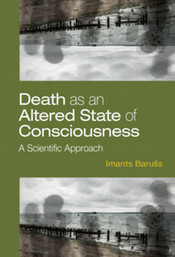 Imants Baruss
Imants Baruss
Death as an Altered State of Consciousness: A Scientific Approach
In this engaging book, diverse phenomena associated with death, such as apparent after-death communication and near-death experiences, are examined through a scientific lens and evaluated for the degree to which they offer evidence for the survival of consciousness after death.
Is death the end of everything? Is life after death really possible? Considerable scientific support has emerged in recent years for the idea that death is best described as an altered state of consciousness. This survival hypothesis contrasts with predominant materialist thinking, which holds that there is only oblivion upon death.
Chapters in this book investigate scientific evidence for mediumship, instrumental transcommunication, near-death experiences, after-death communication, and past-life experiences, among other anomalous death-related occurrences, and a framework is presented for understanding the nature of a potential afterlife. The phenomena described in this book will broaden the perspective of consciousness researchers, and fill an educational need for caregivers, grief counselors, and all who are interested in this understudied and misunderstood area.
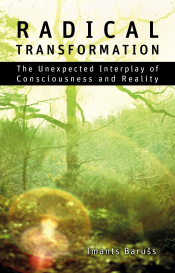 Radical Transformation: The Unexpected Interplay of Consciousness and Reality
Radical Transformation: The Unexpected Interplay of Consciousness and Reality
In Radical Transformation, Imants Barušs leads the reader out of the receding materialist paradigm into an emerging post-materialist landscape in which new questions present themselves. If consciousness has nonlocal properties, then how are boundaries between events established? If consciousness directly modulates physical manifestation, then what is the scope of such modulation? If consciousness continues after physical death, then how much interference is there from non-physical entities? As we face the threat of extinction on this planet, is there anything in recent consciousness research that can help us? Are there effective means of self-transformation that can be used to enter persistent transcendent states of consciousness that could resolve existential and global crises?
The author leads the reader through discussions of meaning, radical transformation, and subtle activism, revealing the unexpected interplay of consciousness and reality along the way.
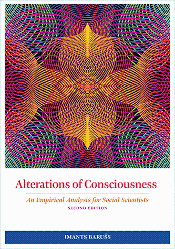 Alterations of Consciousness: An Empirical Analysis for Social Scientists, Second Edition
Alterations of Consciousness: An Empirical Analysis for Social Scientists, Second Edition
This pathbreaking investigation into the nature of cognitive reality explores various manifestations of consciousness, including more familiar states such as sleeping and dreaming, as well as hypnosis, trance, dissociation, and near-death experiences.
Throughout the work, Barušs brings to bear significant new neuroscientific evidence supporting the occurrence of these phenomena and their nature and purpose.
Other major updates include the latest findings in sleep research, therapeutic discoveries related to psychedelics, empirical research into transcendent states, and developments in the study of anomalous phenomena such as purported alien abduction and UFOs.
A new conclusion discusses an exosomatic theory of consciousness that can account for the findings in the text. Students and other readers of this engaging text will sharpen their critical thinking skills and gain an enriched understanding of consciousness, reality, and the scientific endeavor.
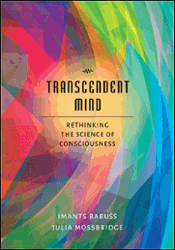 Transcendent Mind: Rethinking the Science of Consciousness
Transcendent Mind: Rethinking the Science of Consciousness
Where does consciousness come from? For most scientists and laypeople, it is axiomatic that something in the substance of the brain — neurons, synapses and gray matter in just the right combination — creates perception, self-awareness, and intentionality.
Yet, despite decades of neurological research, that "something" — the mechanism by which this process is said to occur — has remained frustratingly elusive. This is no accident, as the authors of this book argue, given that the evidence increasingly points to a startling fact: Consciousness may not, in fact, reside in the brain at all.
In this wide-ranging and deeply scientific book, Imants Barušs and Julia Mossbridge utilize findings from special relativity and quantum mechanics, modern and ancient philosophers, and paranormal psychology to build a rigorous, detailed investigation into the origins and nature of human consciousness.
Along the way, they examine the scientific literature on concepts including mediumship, out-of-body and near-death experiences, telekinesis, "apparent time" versus "deep time," and mind-to-mind communication.
The result is a revelatory tour of the "post-materialist" world — and a roadmap for consciousness research in the 21st century. 2017, American Psychological Association.
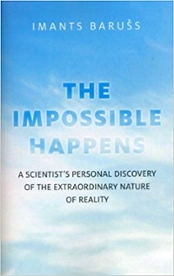 The Impossible Happens: A Scientist's Personal Discovery of the Extraordinary Nature of Reality
The Impossible Happens: A Scientist's Personal Discovery of the Extraordinary Nature of Reality
After decades of analyzing his dreams, a professor of psychology finds that some of them anticipate future events. Not only does he dream the exact day of the year on which one of his books is accepted for publication, but he learns how to use these dreams to create better outcomes in his life. Working with a medium for his research as well as in the classroom, he finds that the medium often gets correct information to which she does not have any ordinary access during apparent conversations with the dead. As his experiments continue to meet with surprising results, the author comes to accept the idea that reality is much more interesting than conventional science has led us to believe. 2013, John Hunt Publishing.



